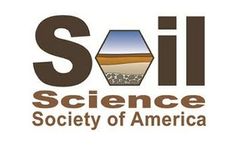Field Laboratory Articles & Analysis
13 articles found
Spectrometers usually use a specific portion of the light, such as visible (400-700 nm), shortwave near infrared (~700-1050nm), infrared (~1000-1700nm), near infrared (~1200-2500nm), ultraviolet ( Portable spectrometers are miniature avatars of larger pieces of equipment, and provide data and help in analysis of plants in the field, laboratory, or classroom. ...
The various advantages of F-750 are that it: Is suitable for use in the field for farmers to determine the fruit maturity to fix the right time for harvesting. ...
PSO algorithm is utilized to calibrate the parameters involved in the model to facilitate a desirable simulation by LSSVR. Implementing on a set of laboratory and field data, the model is capable of performing more satisfactorily in comparison to candidate traditional methods. ...
The species to model were selected based on their sensitivity as in laboratory and field (mesocosm) studies. The ‘GUTS’ model, which describes the toxicokinetics and toxicodynamics of chemicals in individuals, was linked to three >individual >based >models (IBM), translating individual survival of sensitive organisms into population level effects. ...
In ecological risk assessments, data informally incorporated for pesticide usage decisions, such as field and laboratory effect studies along with chemical monitoring and modeling data, can be formally incorporated and expressed in linked causal diagrams. ...
In this study, a performance evaluation of selected sensor calibration was performed considering factory- laboratory- and field-based calibrations. The selected sensors included: the Digitized Time Domain Transmissometry (TDT, Acclima, Inc., Meridian, ID) which is a volumetric soil water content sensor, and a resistance-based soil water potential sensor ...
In addition to the field study, a laboratory study was conducted to screen the same eight cultivars in the lab for tolerance to Al. In the field study, winter canola seed yield decreased linearly below a soil pH of 5.8, which corresponded to a KCl-exchangeable Al concentration of 11 and 15 mg kg–1 for 2007 and 2008, respectively. ...
We developed a time domain reflectometry (TDR) method to measure the spatial pattern of steady-state, local soil water flux density above and below a soil horizon interface under quasi-steady surface water application and implemented it in laboratory and field experiments. Time series of TDR-measured bulk soil electrical conductivity and TDR-measured soil ...
Both cysteine and glutathione extracted between 5 and 45% of Pb and Cd from laboratory and field-contaminated soils at pHs > 6 after 1 h. In the presence of oxygen, the half-life of reduced cysteine was on the order of 0.1 h and dissolved metal concentrations decreased to nearly zero over 24 h. ...
Accelerated dissipation of atrazine has been discovered recently in irrigated corn fields in eastern Colorado. The objectives of this study were (i) to compare the rates of dissipation of atrazine and metolachlor across different soil zones from three dryland no-tillage fields under laboratory incubation conditions and (ii) to determine if rapid ...
We investigated the degradation of abamectin and doramectin in sheep faeces under the laboratory and field conditions. In the first two, out of three experiments, we exposed collective abamectin or doramectin contaminated and homogenised faeces samples to laboratory (UV light; l = 370 nm) and to field conditions on sheep pasture ...
Modelling with GLEAMS required information from field measurements and observations, laboratory analyses, guide tables, industry records, maps and reports published by soil survey and meteorological departments. ...
Modelling with GLEAMS required information from field measurements and observations, laboratory analyses, guide tables, industry records, maps and reports published by soil survey and meteorological departments. ...







